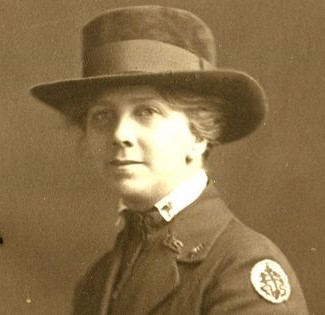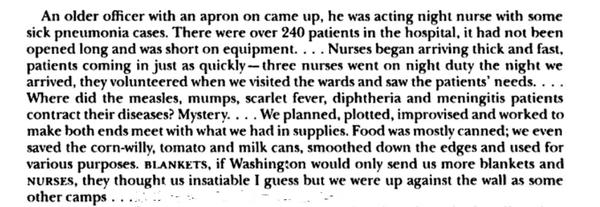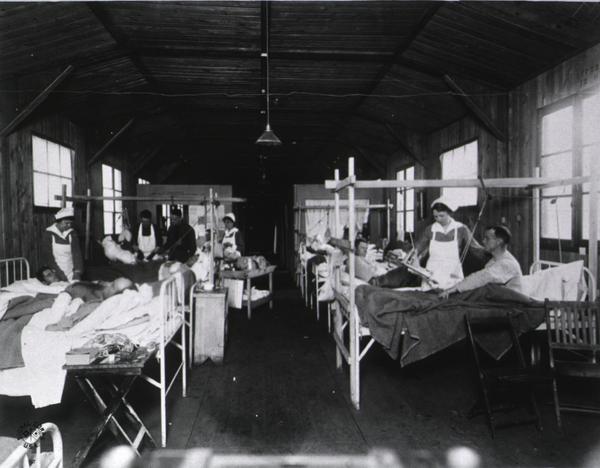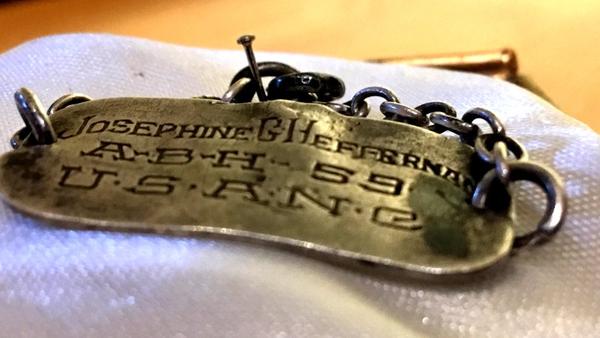2025 Hello , US Army Nurse Josephine Heffernan, a veteran of both WWI and WWII served 43 years in the US Army Nurse Corps. She might have slipped into history
forgotten by all except distant family, if she hadn't lost a bracelet. Josephine's heartwarming story is my call out to remember women veterans next week when the holiday comes around Tuesday, November 11. When I wrote Pure Grit I discovered how the Veteran's Administration failed the military nurses who survived battle and prison
camp in the Philippines. Doctors pooh-poohed their health concerns and the bureaucracy fell-short in providing benefits they deserved after suffering numerous tropical diseases and the ravages of starvation while serving the US military in WWII. Today, women are the fastest growing demographic the US armed forces. Over 16%, of active-duty personnel are female and 10% of veterans. Despite improved emphasis by the VA on the needs of women veterans, many do not receive the care they need due to systems built for men. This administrations VA secretary has highlighted veteran suicide as a critical issue, but the statistics point to a staggering challenge. Over 300,000 U.S. women veterans
confront unique risks, especially around mental health and suicide. More on cuts to the VA and their impact on women veterans below. But first, read about a curious boy and a caring teacher who made sure one women veteran will never be forgotten.
Josephine Heffernan had immigrated from Ireland to America in 1906 and joined the army as a nurse in 1910. When the U.S. entered World War I in 1917, she'd risen to chief nurse at the Fort McDowell post hospital on Angel Island in San Francisco
Bay.
Josephine Heffernan in uniform as a Second Lieutenant in 1919. (Wikipedia) She was one of
only 403 nurses in the army, unaware they were about to be hit, not only with battle wounded soldiers, but massive numbers of men carrying communicable diseases from cities, towns and rural areas across the country.
As hundreds of thousands of men volunteered or were drafted into the army, the medical corps raced to set up camp hospitals to care for soldiers who got
sick before shipping off to war. Such a camp opened at Fort Shelby, near Hattiesburg Mississippi in September 1917, and Josephine was transferred from Angel Island to
work there.
Josephine Heffernan standing at a US Army ambulance along with her driver, Camp Shelby in 1918. (Wikipedia) Below, she describes what she found at the camp hospital.
In the spring of 1918, Josephine was shipped overseas, where eventually she was stationed at US Army Base Hospital Number 52 in Rimaucourt, France. Shown below is a photo of nurses caring for wounded soldiers in ward
No. 1 of the hospital, which had been set up in a school building.
Changing dressings at Base Hospital No. 52, Rimaucourt, Haute Marne, France. Photo
Courtesy Office of Medical History, US Army. Some 85-years later, the building was once more a school when an 8-year-old boy found a bracelet in the dirt of the playground. The bracelet was inscribed with Josephine's name and initials identifying her as a
member of the U.S. Army Nurse Corps. The boy asked his teacher to help him find the woman and return the bracelet.
The Bracelet which belonged to Josephine Heffernan. Photo courtesy International Nurse Historian Marjorie DesRosier, PhD, RN. Teacher Estelle Lefeuvre searched first in the United States
for some clue to Josephine's whereabouts, and after some time discovered a death notice for a women by her name in Bray, County Wicklow, Ireland. She discovered that
Josephine had remained an army nurse until 1943, working in Southeast Asia, the Philippines and Hawaii before retiring and returning to her homeland. Josephine lived out her
years in Ireland, never marrying or having children. She died in 1962 and was buried in Bray with an American flag draped over coffin. Estelle Lefeuvre traveled to Bray in
2017, to give the bracelet to Josephine's grandnephew.
Like my article today? Forward this email to share with family and friends.
Sources https://www.irishcentral.com/roots/irish-us-army-nurse-s-world-war-i-bracelet-returned-after-worldwide-hunt https://prospect.org/2025/10/15/veterans-administration-women-va-military-sexual-trauma-funding/
Budget Cuts at the US Veterans Health Administration.
It's hard to get a clear answer about the budget cuts and benefit changes taking place at the Veterans Administration. VA Secretary Doug Collins has been praised for halting major layoffs in June and implementing the VA MISSION Act passed by Congress (June 2019) enabling veterans to receive
care outside the VA system to alleviate long waits for care and long distance travel to get care. However, by September 30, the Veterans Health Administration slashed it's overall headcount by nearly 33,000 positions — nearly 8% fewer employees a year ago. Meanwhile, Collins told Prospect "The prevalence of veteran suicide is an issue that breaks my heart, and it’s one we have to do a better job addressing." Kayla Williams, an Iraq veteran, sought
mental health support at a VA Vet Center but switched to virtual therapy after her therapist left. When she turned to private-sector therapists contracted through the Veterans Community Care Program—a result of the VA MISSION Act. At her first appointment, her therapist was unfamiliar with military sexual trauma (MST). “This
immediately destroyed any trust I could have had in the provider,” Williams says. “You’re taking referrals from the VA to care for veterans, and you don’t even bother to have the minimum amount of clinical or cultural competency. You’re essentially asking your patient to train you.” Its key findings:
• Women veterans’ suicide rate is 92.4% higher than non-veteran women.
• 45.4% of women veteran suicides involve firearms.
• Those reporting military sexual trauma (MST) have 75% higher suicide risk than other women veterans. One in three women veterans has experienced harassment or assault in service. This Veterans Day may be a great time to call you elected senators and congress people and bring there attention to the needs of women veterans, especially in suicide prevention.
Follow me on social media
This newsletter is a reader-supported publication. To support my work, consider becoming a paid subscriber.
Read
a great book? Have a burning question? Let me know. If you know someone who might enjoy my newsletter or books, please forward this e-mail. I will never spam you or sell your email address, you can unsubscribe anytime at the link below. To find out more about my books, how I help students, teachers, librarians and writers visit my website at www.MaryCronkFarrell.com. Contact me at MaryCronkFarrell@gmail.com. Click here to subscribe to this newsletter. |
|
|







